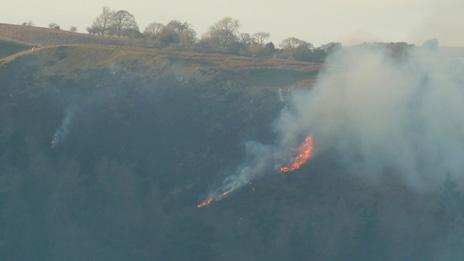Climate change damaging purple heather: National Trust
- Published
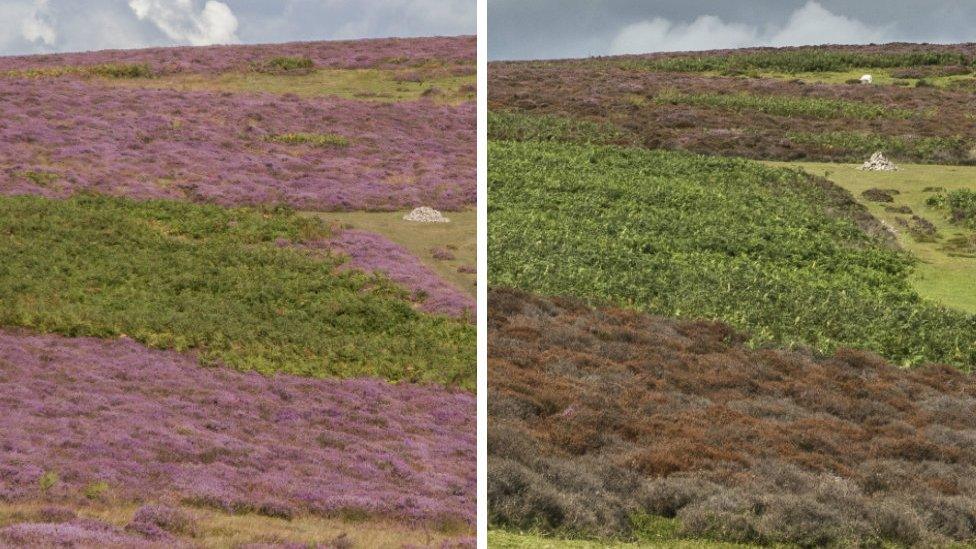
Instead of a purple haze, acres of heather on Shropshire's Long Mynd have been turned brown
Climate change is turning hillside heather from purple to brown, the National Trust says.
Acres of heather on the Long Mynd, in Shropshire, and Holnicote, on Exmoor, have suffered due to last year's hot, dry weather and an increase in pests caused by the following mild winter.
This has a knock-on effect on wildlife such as red grouse and emperor moths, whose caterpillars feed on the plants.
It is hoped "careful management" will allow the heather to recover.
The National Trust said up to 75% of the plant on both sites, which are in its care, was in poor health this year.

The National Trust said there would be no "mass blooming" of heather on the Long Mynd this year
A prolonged hot summer in 2018 restricted water to the heather, while a lack of rain through the winter and first half of this year also took its toll.
The milder winter also boosted beetle numbers. The insects damage the heather's outer leaves and make it more susceptible to drought stress, the trust said.
Peter Carty, from the trust in Shropshire, said: "In places where heather was sheltered... or where damp conditions were present, the heather has survived.
"However, there will be no mass flowering this year."
Keith Jones, climate change specialist at the trust, said: "We are seeing first-hand the impacts of climate change on at least two of these special landscapes within our care."
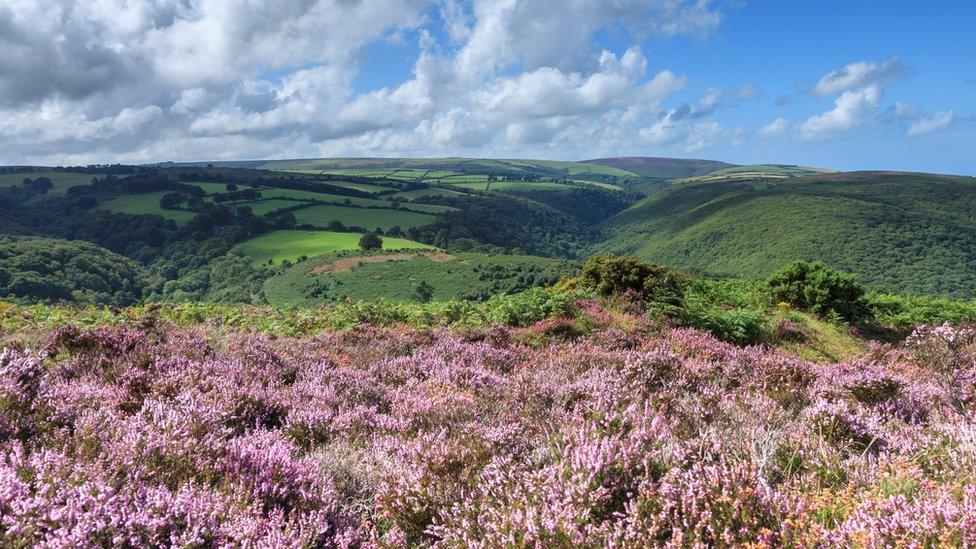
In previous years purple heather has bloomed across hillsides at Holnicote
At Holnicote, the trust is planting trees to slow the flow of water in the valley and restoring wet habitats such as blanket bogs to counter dry conditions.
Prolonged warmer weather could also boost heather shield bugs, a natural predator to heather beetles.
Follow BBC West Midlands on Facebook, external, on Twitter, external, and sign up for local news updates direct to your phone, external.
- Published6 October 2017
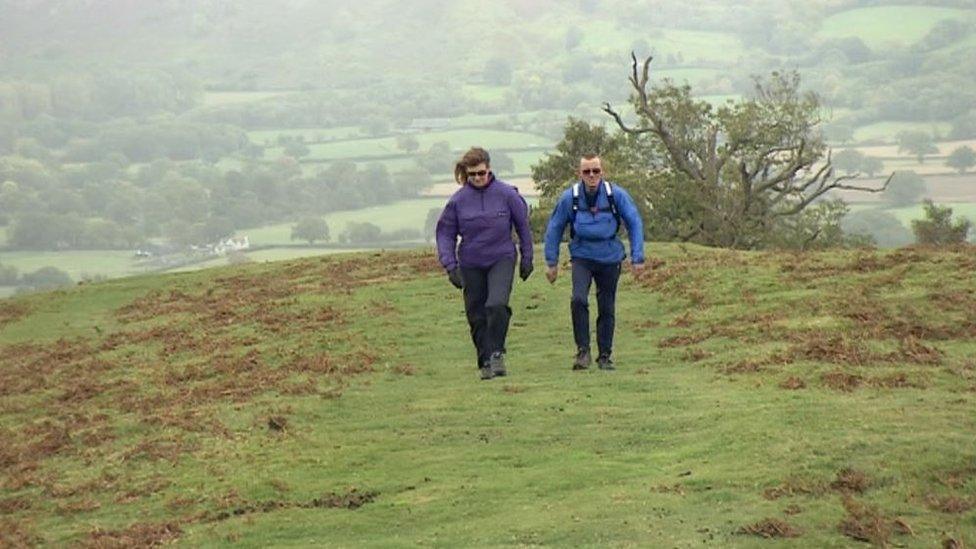
- Published17 July 2019

- Published6 February 2019

- Published19 October 2017

- Published3 February 2015
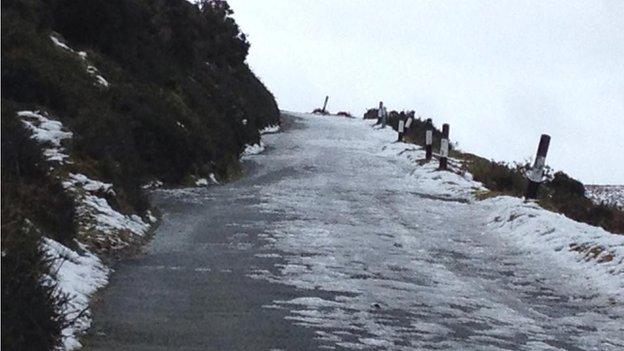
- Published6 December 2014
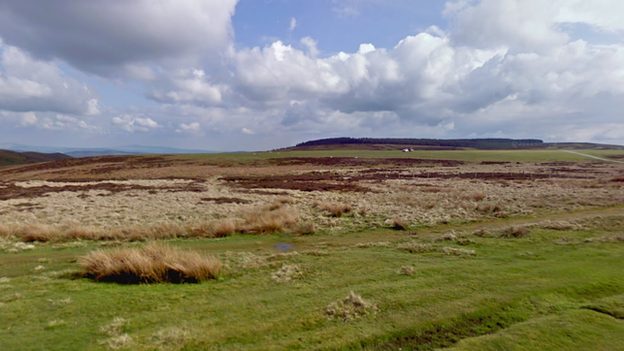
- Published14 March 2013
